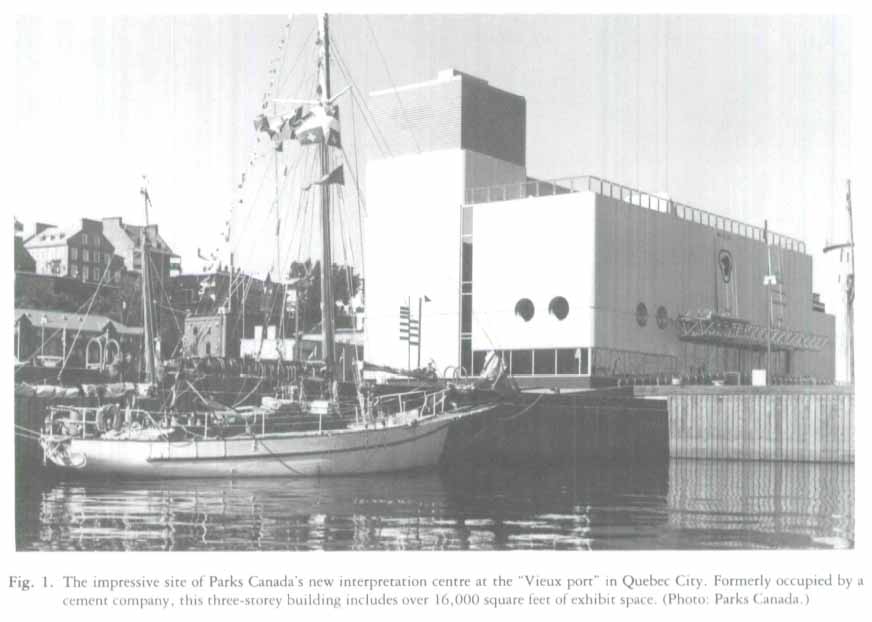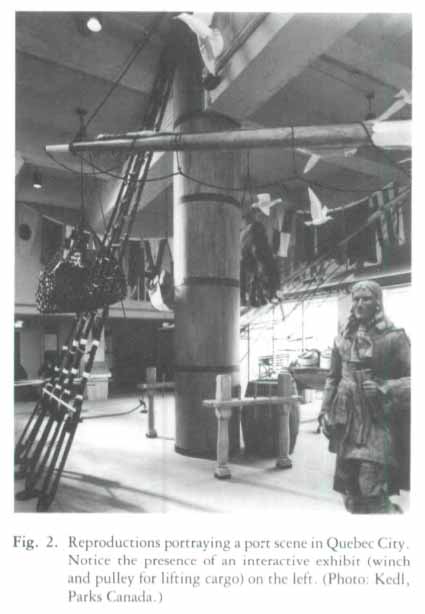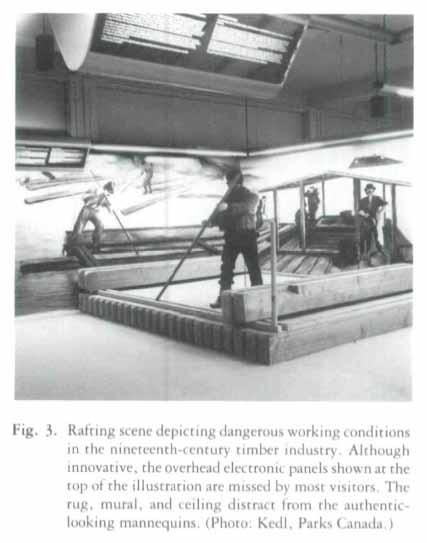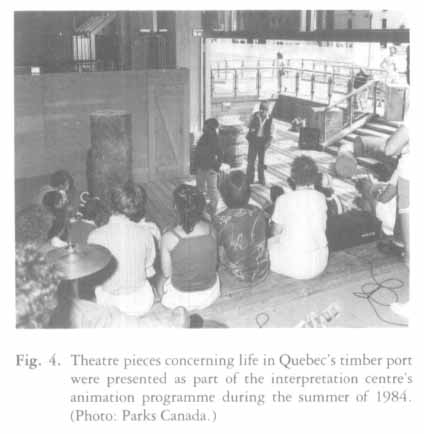Reviews / Comptes rendus
Parcs Canada, région du Québec, "Québec: port d'entrée en Amérique; le commerce du bois et la construction navale"
1 How can an institution produce history exhibits organized around artifacts and avoid being called a museum? This is a question people ask about some of the projects undertaken by the personnel at Parks Canada, It is particularly pertinent for the interpretation centre, identified by many as the "Musée du vieux port" (Museum of the Old Port), in Quebec City. Here visitors are introduced to exhibits on the history of the timber trade and shipbuilding through the use of a variety of interpretive techniques: audio-visual presentations (including a very innovative, though slightly confusing, animated film on the development of the port of Quebec), historic illustrations, interactive techniques (e.g., lifting material with the use of pulleys), "talking" mannequins dressed in reproductions of period costumes, theatrical presentations, maquettes (e.g., of a timber cove), partial reconstitutions (e.g., merchant's summer house, tavern, boat's bow, ship handler's store, clerk's office), and reproductions of historic artifacts.
 Display large image of Figure 1
Display large image of Figure 12 Answers to the question raised above are complex because distinctions between Parks Canada and museum exhibits are becoming increasingly blurred. One response is that the latter emphasize period artifacts in exhibits and the former rely on reproductions, but since both institutions use objects that fall into these two categories, even this distinction is difficult to make. Some historic sites such as Louisbourg include a large number of period pieces and differ little from museums in this respect. The traditional assumption that history researchers in Parks Canada work primarily on historic sites of a political or military nature and those in museums work on themes dealing with artifacts and socio-cultural history is no longer valid since personnel in both are increasingly concerned with similar topics. Similarities in these institutions' research and exhibit subjects were particularly evident when this reviewer visited the interpretation centre at the "Vieux port" in Quebec City during the summer of 1984. A travelling exhibit on woodworking trades (including shipbuilding, lumbering, and cooperage) from the National Museum of Man, which was on display in the centre's temporary exhibit gallery, was described by Parks Canada guides as being particularly useful in providing visitors with additional background information on displays at the centre.
3 The similarity of the centre's display on the timber industry and shipbuilding to museum exhibits allows one to evaluate it from a museological perspective. Although the storyline is comprehensive, and many of the design techniques innovative, visitors have some difficulty understanding the message. This is in part because some of the major themes (e.g., British protectionism and the commercial empire in which the colonial timber trade was involved) are highly complex and occasionally difficult to relate to sub-themes such as working conditions.
4 The difficulty of understanding some of these themes is a result of the exhibit's design. Although techniques such as dialogues between talking mannequins (the voices of which are a bit muffled) and the use of electronic overhead information panels (which are too high for children to read and tend to be missed by many visitors) are new and interesting, they need additional refinement. In spite of the very good costume reproductions dressing the mannequins, one would have hoped for clearer voice recordings as well as more realistic facial renderings. Although the cost of replacing some mannequins with holograms (lifelike images created by lasers and photographs) would be high, it might be feasible to justify the development of such new technology for use in a number of exhibits and sites over a long period of time.
 Display large image of Figure 2
Display large image of Figure 2 Display large image of Figure 3
Display large image of Figure 3 Display large image of Figure 4
Display large image of Figure 45 Some of the building facades as well as the interiors lack realism. The expensive use of mirrors to provide the appearance of depth, developed so successfully in Parks Canada's Artillery Park exhibit in Quebec City, is not employed often in this display. Consequently, many of the interiors appear shallow. Little additional money but more research on synthetic materials would have improved the appearance of facades, a number of which resemble theatre props.
6 Additional research and the help of museum educators might have improved the traffic flow. If visitors arrive after the doors have been shut to the theatre (which has specific times for the French and English versions of the film), they miss important background information on the evolution of the port and the timber trade. The maze-like circulation within the centre would function better if the audio-visual introduction did not depend on a theatre with a captive audience and if the different sub-themes and exhibits were more easily identified and located. An interesting part of the exhibit involves mannequins dressed as shipbuilders and includes an activity allowing the public to hammer a caulking-type material between timbers; unfortunately, it is almost hidden in a narrow corridor.
7 In spite of the problems mentioned above, the centre's exhibit on the timber trade and shipbuilding is informative and innovative. A comprehensive storyline, as well as the use of a wide range of design techniques, makes this display worthy of those found in our best museums.
Editor's note: A review of "Of Men and Wood" at the New Brunswick Museum is published above.